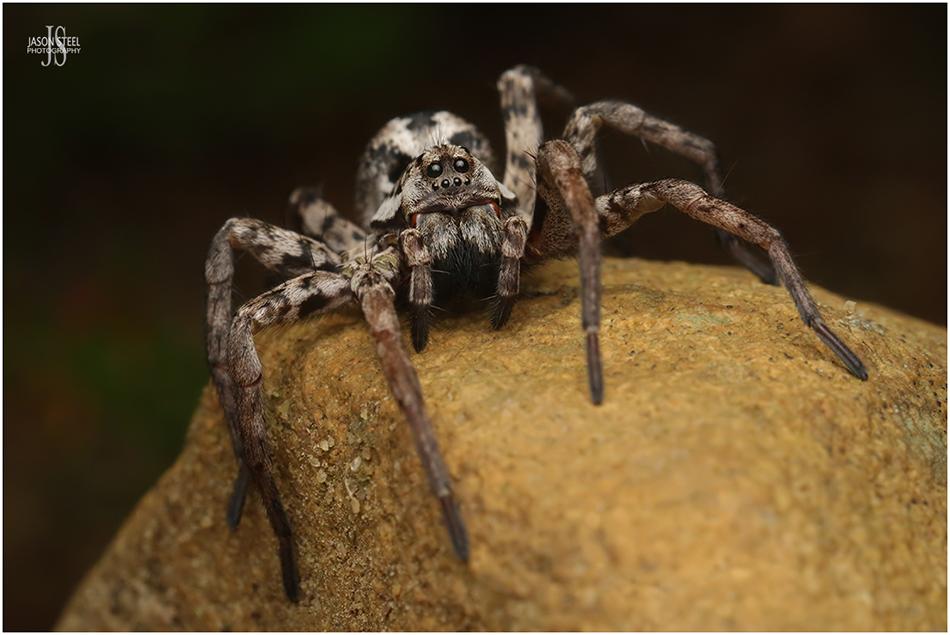
17mm adult female Great Fox Spider, photographed at Hankley Common, Surrey, 4th October 2024.
Wolf Spiders of the Alopecosa genus.
Wolf Spiders have a distinctive eye-arrangement, which includes a row of 4 small anterior eyes. Above the anterior eyes they have 2 large, forward-facing posterior median eyes, and 2 posterior lateral eyes, that are set back about a third of the length of the spider's cephalothorax, on the upper edge. Wolf Spiders have excellent eye-sight. The positioning of the eyes gives the spider a great defensive view of aerial predators, as well as allowing these spiders to spot their prey from some distance. Wolf Spiders do not make webs to catch their prey. Instead they rely on their great eye-sight and their fast speed to chase down their prey.
All spiders belonging to the family Lycosidae are collectively known as Wolf Spiders. Within the family Lycosidae we have 8 separate genus: Pardosa, Xerolycosa, Hygrolycosa, Arctosa, Trocosa, Pirata, Aulonia, and Alopecosa. Pardosa are largely diurnal generalists, and some are common garden species. Xerolycosa prefer dry, exposed habitats. Trochosa are nocturnal generalists. Arctosa & Alopecosa are found at various complex, undisturbed, open habitats. Pirata frequent various wetland habitats.
Wolf Spiders within the Alopecosa genus are known as Fox Spiders, and the UK has 4 different Fox Spider species: Common Fox Spider, Alopecosa pulverulenta, Knobbly-Kneed Fox Spider, Alopecosa cuneata, Easter Fox Spider, Alopecosa barbipes and the Great Fox Spider, Alopecosa fabrilis.
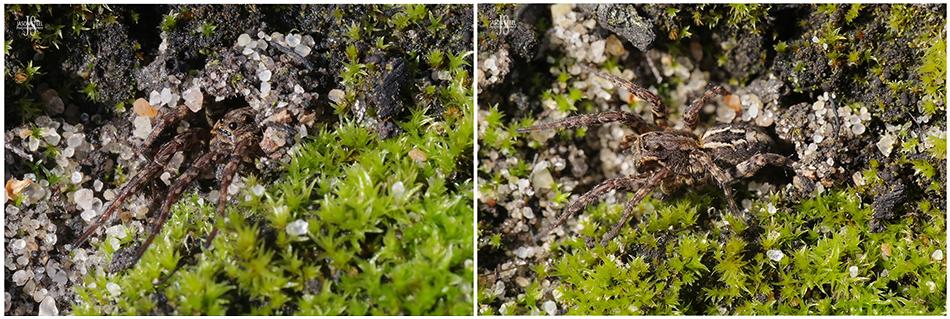
Easter Fox Spider, Alopecosa barbipes, photographed at Hankley Common, Surrey, 4th October 2024.
All Fox Spiders, including the Great Fox Spider, build their retreat by digging beneath loose soil or sand, sometimes beneath rocks, in the form of a small silk-lined burrow. Burrows are dug using the spiders powerful front legs. The spider then enters the excavated hole backwards and uses its rear legs to shovel out the loosened soil particles. This Easter Fox Spider, Alopecosa barbipes, pictured above, was seen wandering around at the top of a sandy bank, on a Surrey heathland site. Once it sensed by presence it and straight back to a small hole in the ground and disappeared into its burrow. After several minutes of waiting quietly, and patiently, the Easter Fox Spider began to slowly emerge from its burrow once again.
The Great Fox Spider - Alopecosa fabrilis

17mm adult female Great Fox Spider, photographed at Hankley Common, Surrey, 4th October 2024
One Of Britain's Rarest And Most Spectacular Spiders
The Great Fox Spider, Alopecosa fabrilis, is a Nationally rare, Critically endangered, and Biodiversity Listed species in the UK. In Britain the spider was first described in 1868 by Rev. Octavius Pickard-Cambridge. Historically it was confined to just two small areas at the Morden Heath site in Dorset. In 1958 the Great Fox Spider was then also discovered at Hankley Common in Surrey. Until recently the spider had not been recorded at either of these sites though since 1990, and it was feared that the Great Fox Spider was likely to be completely extinct in the UK. That was until 2020, when Mike Waite, Director of Research and Monitoring for the Surrey Wildlife Trust, discovered an adult male Great Fox Spider on the Hankley Common heathland site in Surrey. Mike was actively researching the site, and recording its various species for two years. It was once Mike started using pitfall traps that the Great Fox Spider suddenly turned up in one of his traps the next morning. Being such a large and striking looking spider the story was immediately picked up by the BBC's Autumn Watch TV program, and made headlines in several of the major newspapers. It was after Mike's finding, and the publication of the news of the Great Fox Spider being rediscovered at Hankley Common for the first time in Britain for 30 years, that another, slightly more recent record was then discovered. This record, by arachnologist Dick Jones, confirmed that the Great Fox Spider was actually seen at Morden Bog in 1999. This still meant that Mike's finding was the first in the UK for 21 years, and the first recorded sighting in Surrey for nearly 30 years. In 2022 Mike Waite expanded his research to the Morden Bog site in Dorset, where the Great Fox Spider was known to previously be established. Unfortunately much of Morden Bog, as its name suggests, is too damp and is not suitable habitat for the Great Fox Spider. Despite the extensive use of pitfall traps for three days Mike was unable to find a single specimen at the Dorset site. Mike resumed his search in 2023 and was finally able to find both juvenile and adult specimens in a very small area at the top of the Morden site. These were the first Great Fox Spider records at Dorset since 1999.
On 1st February 2024 Mike Waite gave an excellent online presentation of his rediscovery and research on the Great Fox Spider at Hankley Common. - LINK LINK 2
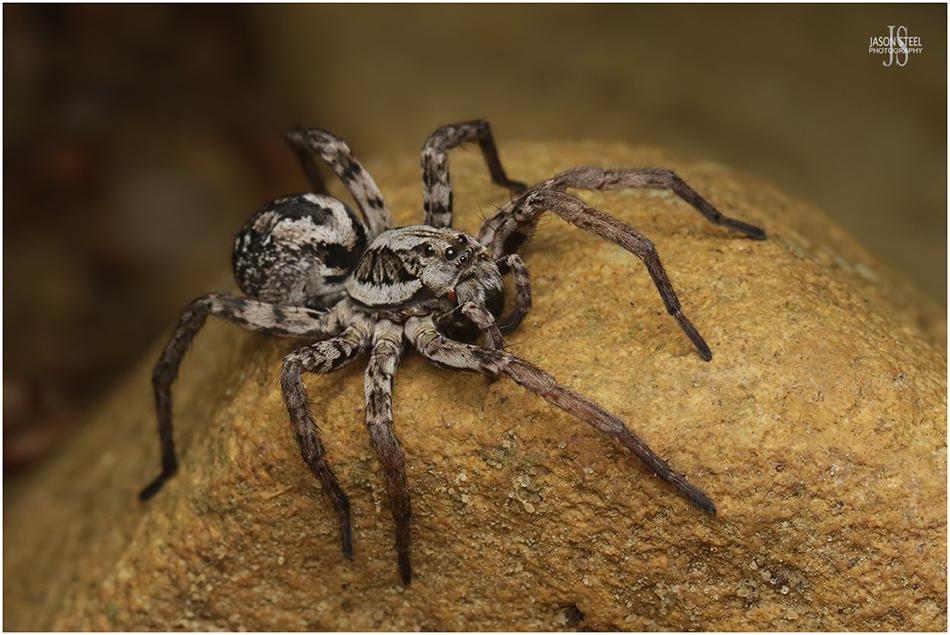
17mm adult female Great Fox Spider, photographed at Hankley Common, Surrey, 4th October 2024
Identifying the Great Fox Spider
The Great Fox Spider is far larger than any other Alopecosa species found in this country, and is one of the largest Wolf Spiders in Britain. Adult females typically grow to a body-length of 13-16mm, with some specimens reaching 18mm. The male is usually smaller than the female. It has a proportionally longer leg-span, but a shorter body-length, and typically reaches just 10-12mm. Mike Waite reports that some male specimens can still reach up to 16mm in body-length though. Adult specimens are sexually dimorphic to some degree. As well as having longer legs males also tend to be slightly paler in shade and have slightly less obvious markings. Adult females can be distinguished by the presence of two dark, narrow tramline markings on the front half of the top of their carapace. These tramline markings can also be present on some juvenile female specimens too, but are not found on males. Some sources report that adult females tend to have a flash of deep red colouration either side of their chelicerae. However I have found this red flash of colour to be present on adult male specimens too, so this feature doesn't help with determining the sex of the spider. Juvenile Alopecosa fabrilis can sometimes be confused with juvenile Alopecosa barbipes. The paired white spots on the abdomen of Alopecosa fabrilis are always more prominent than any pale spots found on Alopecosa barbipes. A quick look at the underside makes distinguishing the species even easier as Alopecosa fabrilis has a black underside, unlike any other of the Alopecosa species found in Britain.

17mm adult female Great Fox Spider, photographed at Hankley Common, Surrey, 4th October 2024
Unlike other Fox Spiders in Britain the Great Fox Spider is entirely nocturnal as an adult. Juveniles can sometimes be active during the daytime, deep within the cover of leggy heather plants. In the UK the Great Fox Spider is a dry heathland species and favours areas with bare sand, juxtaposed with discontinuous leggy heather, and open stony ground, especially on south-facing slopes.
The Great Fox Spider is widespread across much of Europe. Here it Britain it is at the very edge of its range, and our climatic conditions may not be as favourable as those found on the Continent, and in Britain the Great Fox Spider is critically endangered. With Hankley Common, in Surrey, and one small part of Morden Bog, in Dorset, now being the only sites in Britain where this species is currently known to exist, the Great Fox Spider is highly vulnerable and is at enormous risk of being completely wiped out should these sites be hit by severe heathland fires. Not only does this spider have specific habitat requirements but it doesn't seem to be great at colonising new areas either. The young spiderlings do not balloon to disperse so moving into and colonising other suitable habitat can take considerable time. Discussions are currently underway for the possibility of a captive-breeding project for the Great Fox Spider. If successful the spiderlings could then be released at more sites, where there is suitable habitat.
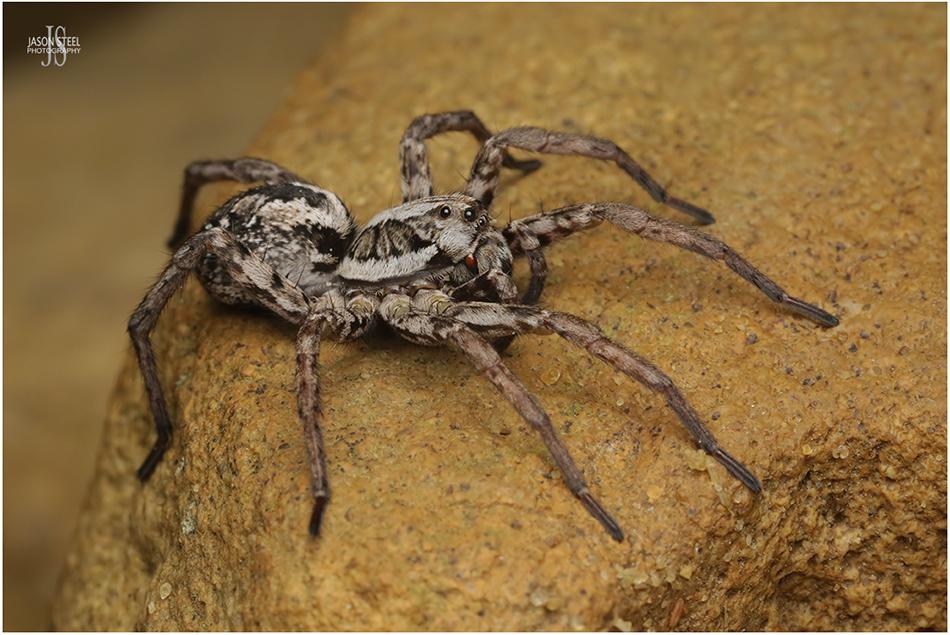
17mm adult female Great Fox Spider, photographed at Hankley Common, Surrey, 4th October 2024
The Great Fox Spider is an opportunist hunter and emerges at night to hunt other invertebrates. Its victims can include beetles, millipedes, moths, wasps, other spiders, including that of its own kind, and just about anything else it can catch and over-power. Whilst juvenile specimens tend to stay close to the heather, which provides them with a safe haven against other predators, adult Great Fox Spiders can often be found out in the open on bare sandy or stony soil. Adult females have also been known to climb the heather and hunt above ground level on occasion too.
The best season to find adult specimens is August through until October. Wandering males seek out and carefully approach the burrows of adult females. If accepted the male will enter the female's burrow, where mating will take place. At the end of autumn the adult males die off but the adult females overwinter. Females have been seen active during particularly mild winter periods. In the spring the adult female can be seen carrying her huge egg-sac. The egg-sac is held underneath them, using the spider's fangs and pedipalps, in a similar style to that of Raft Spiders, Dolomedes sp., and the Nursery-web Spider, Pisaura mirabilis. A photo of the female with her egg-sac can be seen here. As with other Wolf Spiders once the young spiderlings hatch they are carried around in mass on the back of the mother spider. They will enjoy the protection of the adult female for the early days of their new life outside of the egg-sac. A photo can be seen here. Juveniles take around two years to reach maturity.
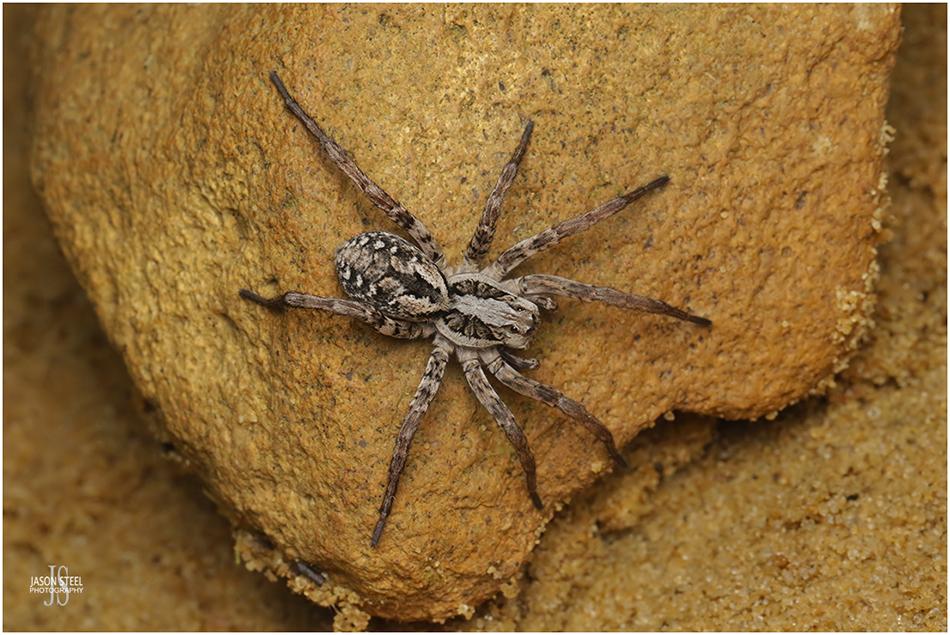
17mm adult female Great Fox Spider, photographed at Hankley Common, Surrey, 4th October 2024
Hankley Common is a heathland / woodland site of about 56 hectares. The site is owned by the MoD, who use it for training purposes. The site is managed and maintained by ARC-Trust and the Surrey Wildlife Trust. It is part of the Thursley, Hankley and Frensham Commons. Much of Thursley Nature Reserve is a bog site, but the site does contain some areas of suitable habitat for the Great Fox Spider, but despite surveys of the site this species has not been found there. Frensham Common contains a lot of very suitable habitat for the Great Fox Spider but unfortunately this spider does not appear to be present at this site either. Frensham Common could be an ideal candidate, as a suitable receptor site, should a captive-breeding and reintroduction program be launched in the future.
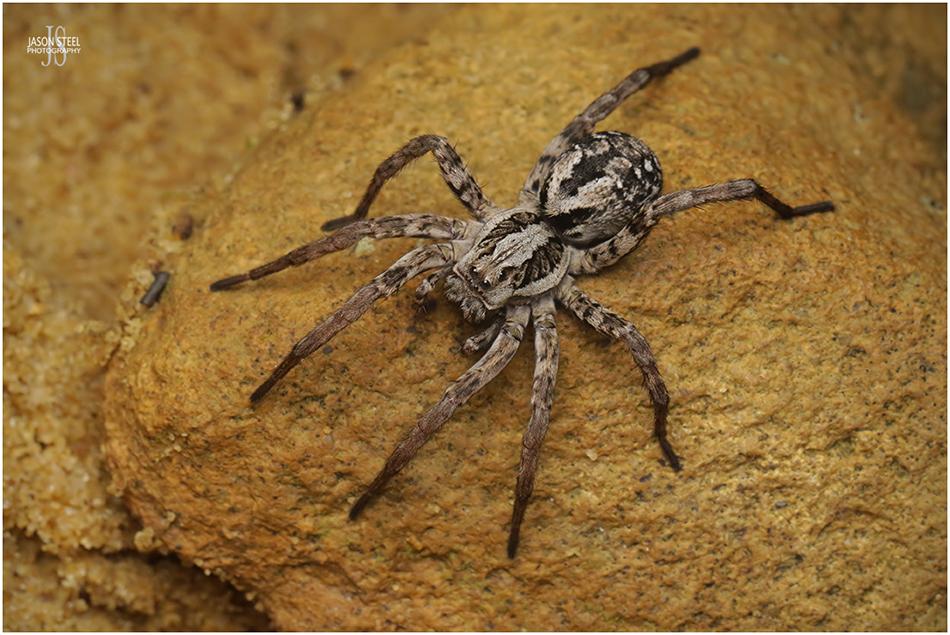
17mm adult female Great Fox Spider, photographed at Hankley Common, Surrey, 4th October 2024
The Great Fox Spider is targeted by a parasitoid species, the Pompilid Spider-wasp Arachnospila rufa. Arachnospila rufa is a large black wasp with a bold orange forefront to its abdomen. - LINK. Historically Arachnospila rufa was known to inhabit two sites in Dorset, both around the Morden area, but this wasp has not been recorded in the UK since 1938 and is now believed to probably be extinct in Britain. Arachnospila rufa is still found on the Channel Islands. - LINK
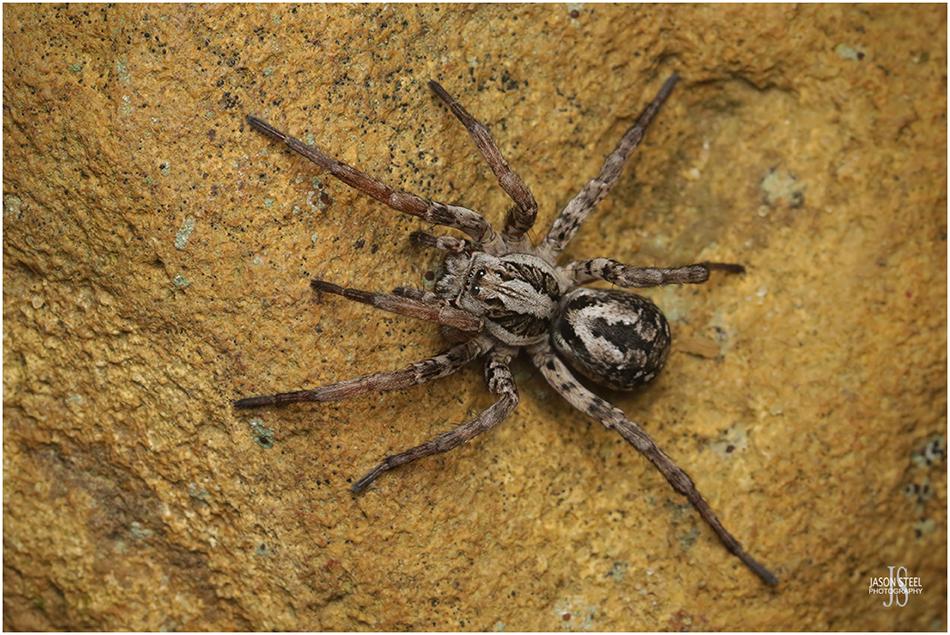
17mm adult female Great Fox Spider, photographed at Hankley Common, Surrey, 4th October 2024
Random fact: In Lithuania Alopecosa fabrilis is known as Smėlinis pleištavoris, which translates to the Sand-wedge. - LINK
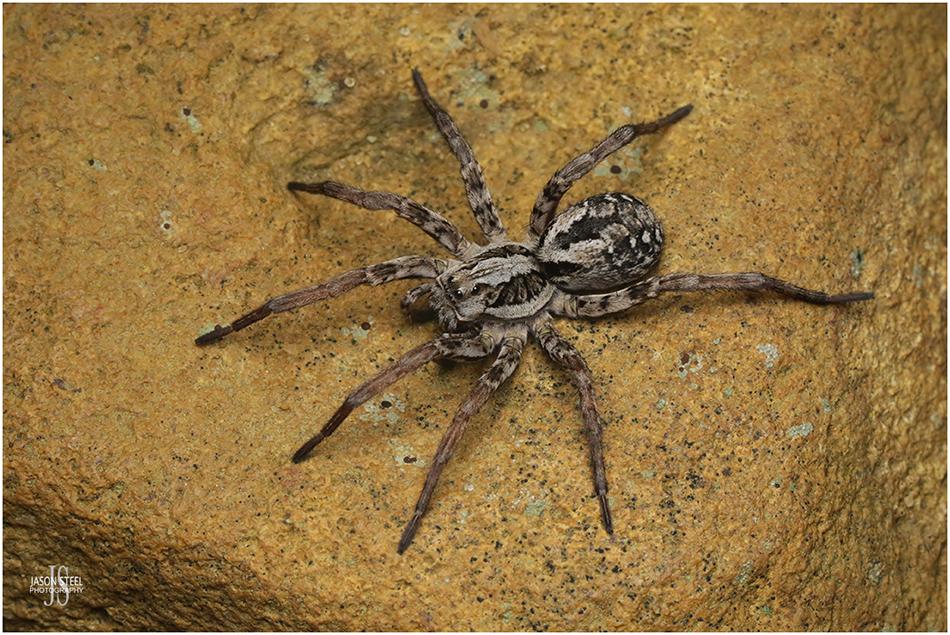
17mm adult female Great Fox Spider, photographed at Hankley Common, Surrey, 4th October 2024
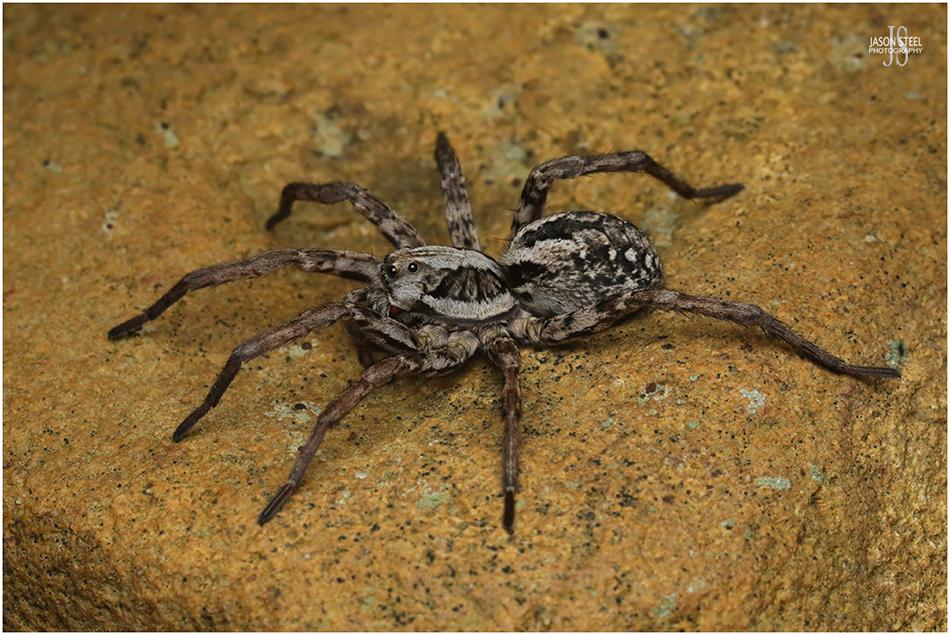
17mm adult female Great Fox Spider, photographed at Hankley Common, Surrey, 4th October 2024
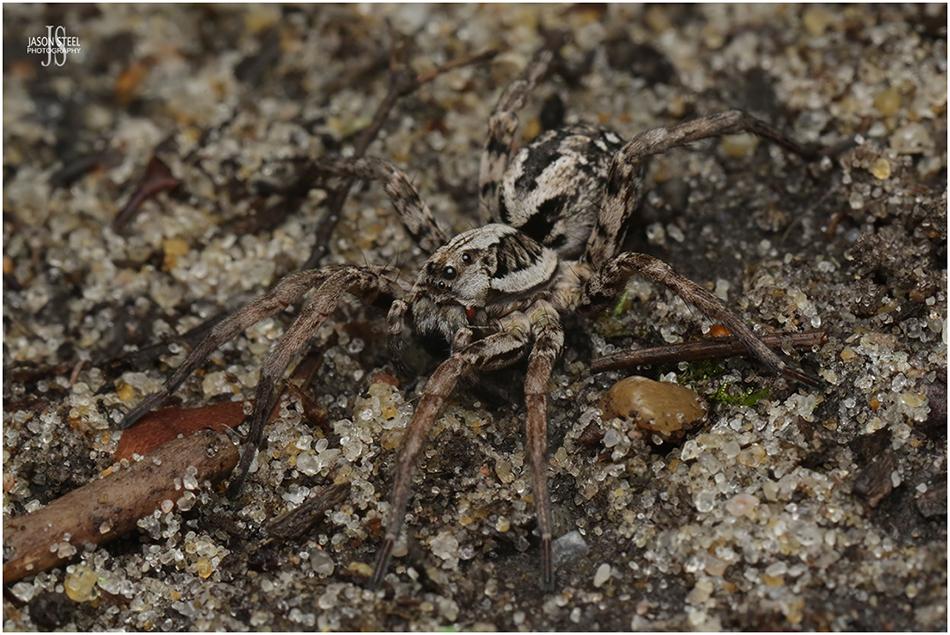
Adult female Great Fox Spider, photographed at Hankley Common, Surrey, 4th October 2024
Against the right substrate the Great Fox Spider is remarkably well camouflaged and difficult to spot. When photographing this specimen at night there were a couple of occasions when I looked away from the spider for just a few seconds and when I looked back the spider had vanished. Initially I thought the spider had used its speed to make a dash for freedom, but in actual fact the spider had continued to remain perfectly still and had just blended into the background. It took a little while for my eyes to adjust and spot the spider once again.

Adult female Great Fox Spider, photographed at Hankley Common, Surrey, 4th October 2024
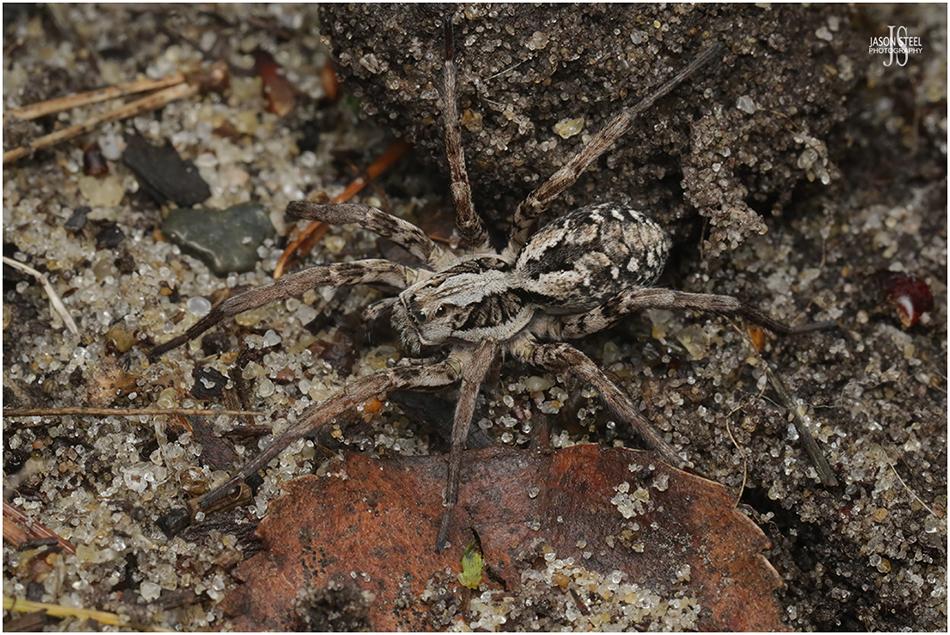
Adult female Great Fox Spider, photographed at Hankley Common, Surrey, 4th October 2024
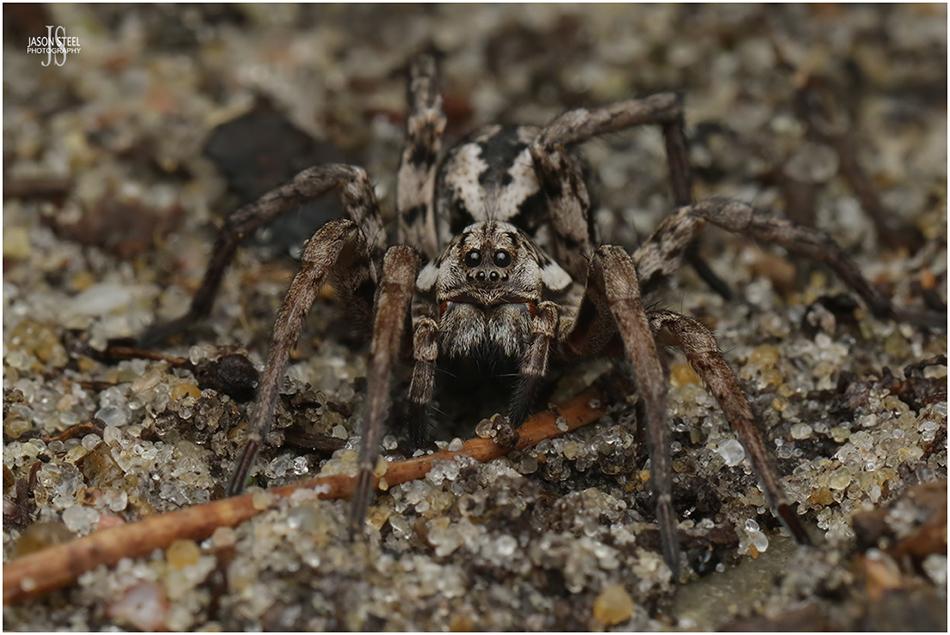
Adult female Great Fox Spider, photographed at Hankley Common, Surrey, 4th October 2024
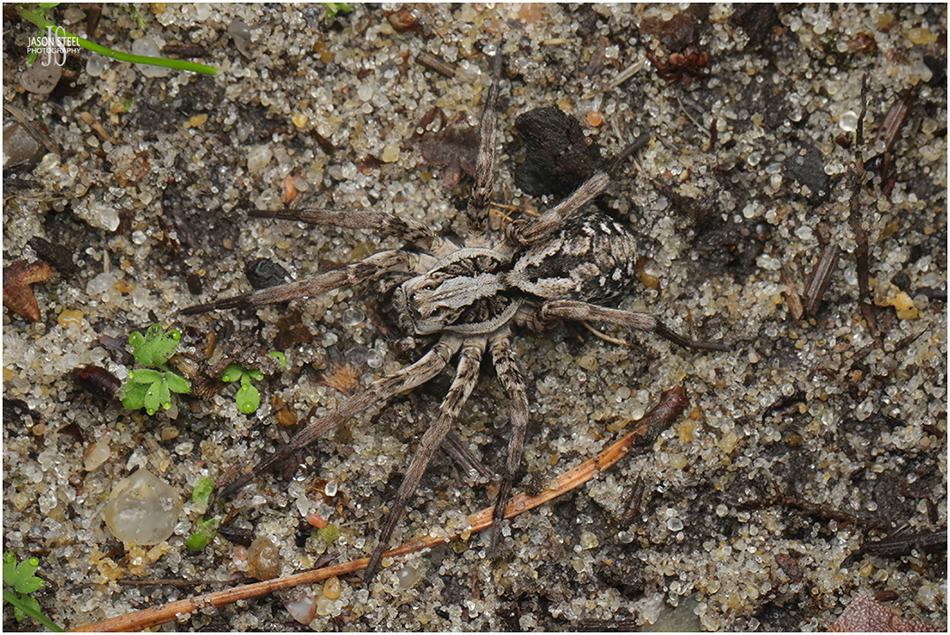
Adult female Great Fox Spider, photographed at Hankley Common, Surrey, 4th October 2024
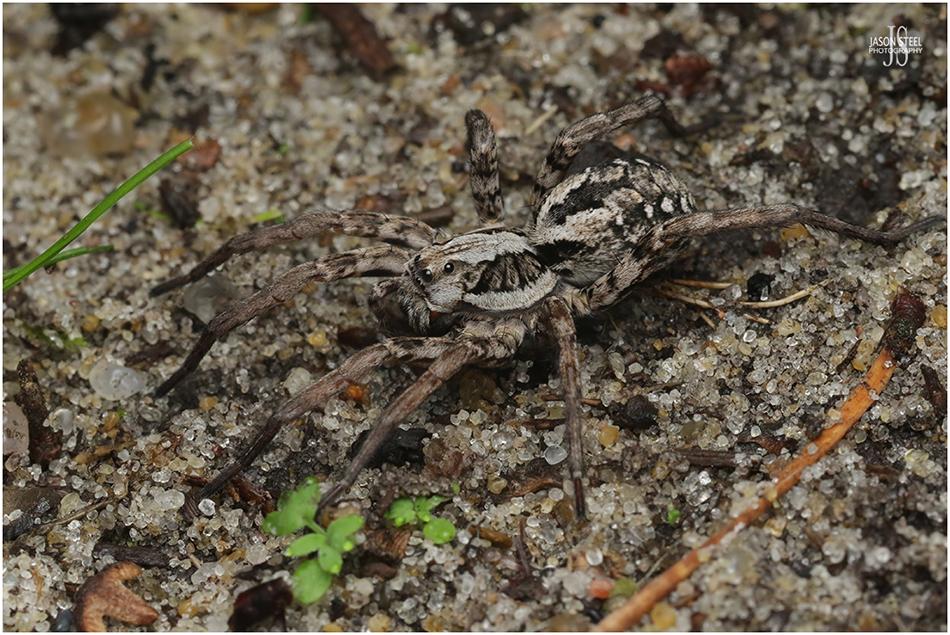
Adult female Great Fox Spider, photographed at Hankley Common, Surrey, 4th October 2024
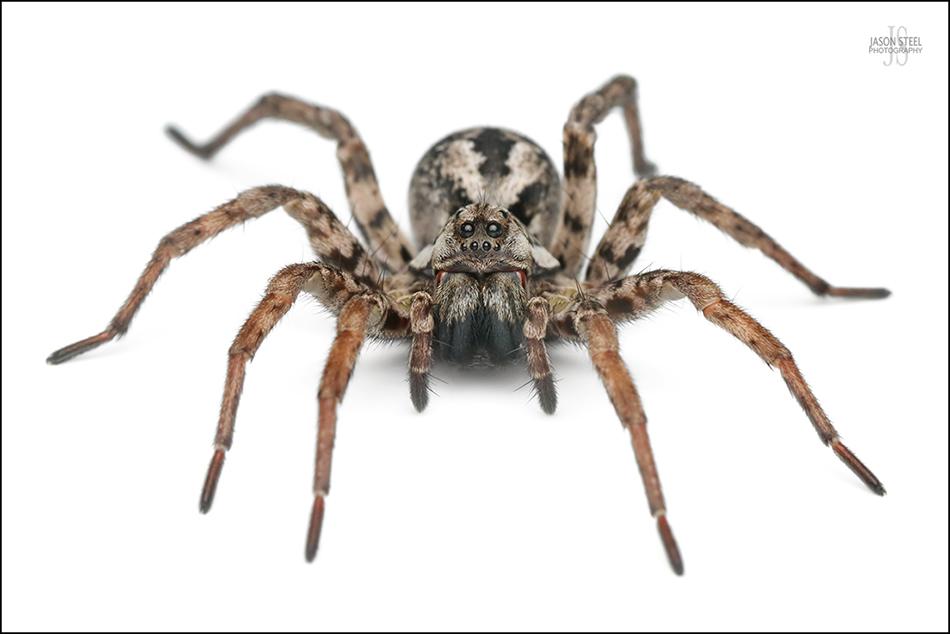
Adult female Great Fox Spider, photographed at Hankley Common, Surrey, 4th October 2024
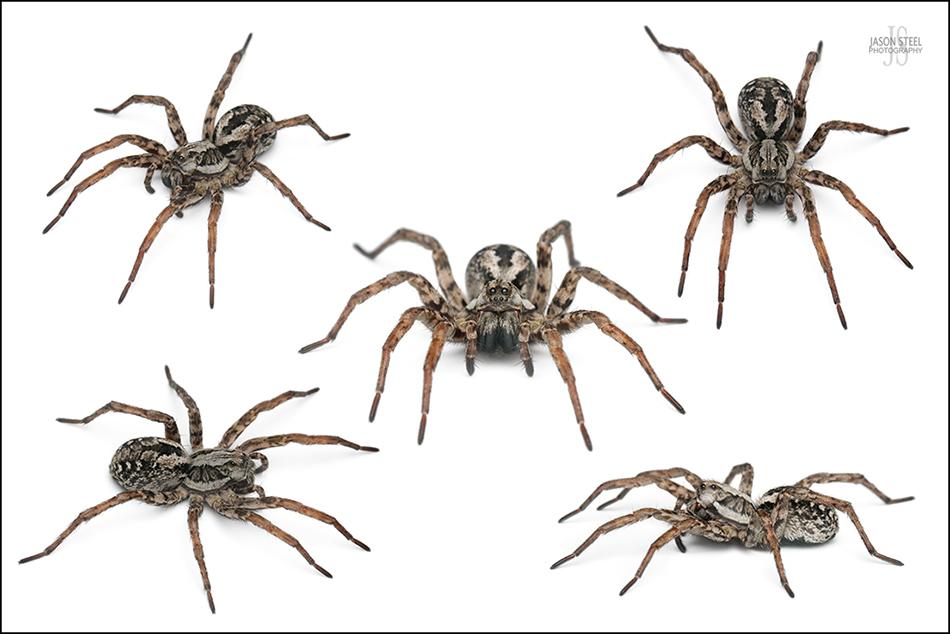
Adult female Great Fox Spider, photographed at Hankley Common, Surrey, 4th October 2024
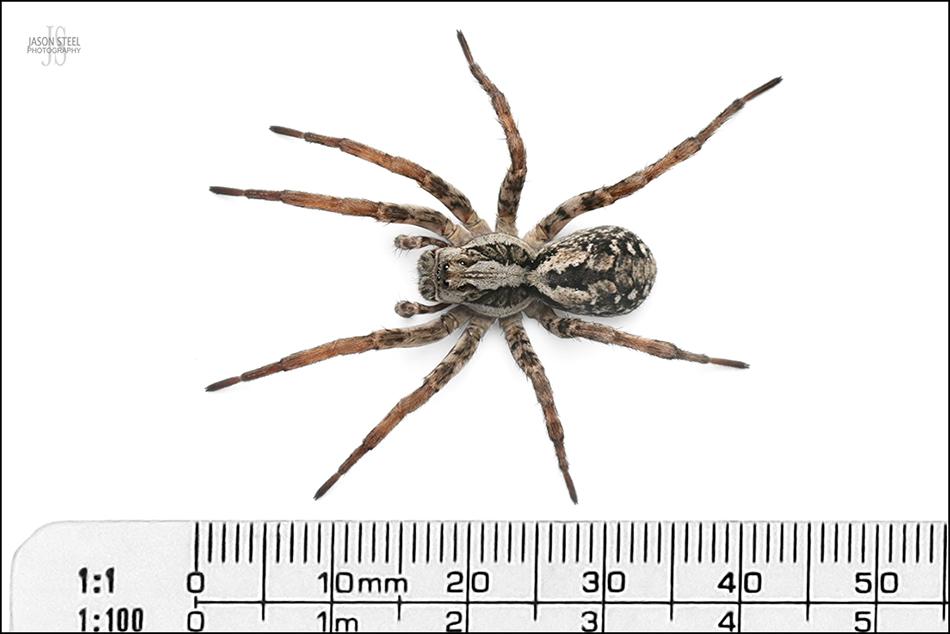
17mm adult female Great Fox Spider, with a leg-span in excess of 48mm, Surrey, 4th October 2024
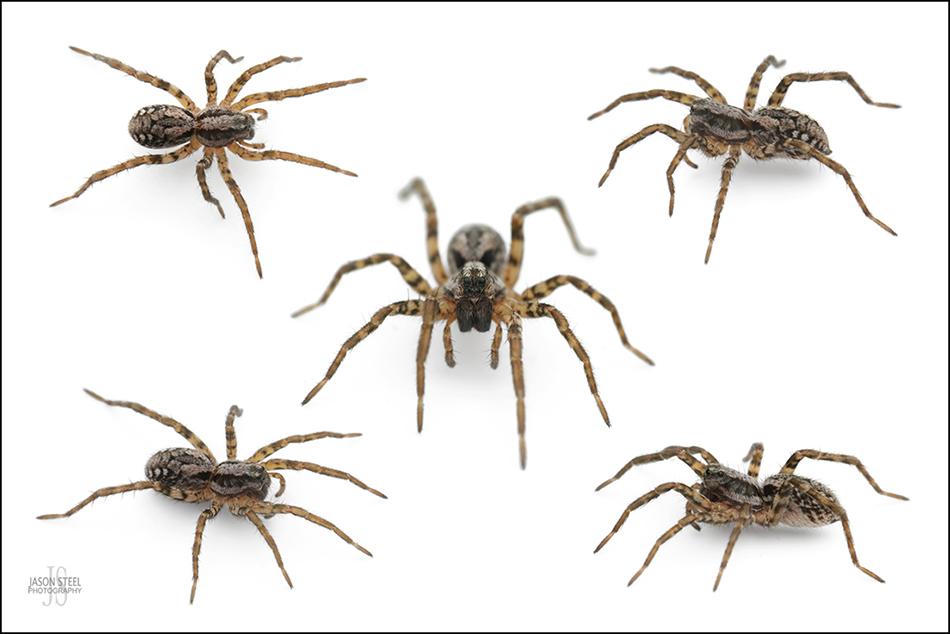
6mm juvenile Great Fox Spider, Hankley Common, Surrey, 4th October 2024
The pale grey abdomen and cephalothorax of the juvenile Alopecosa fabrilis has a distinctive pinkish-red hue that's quite easy to notice against a white background.
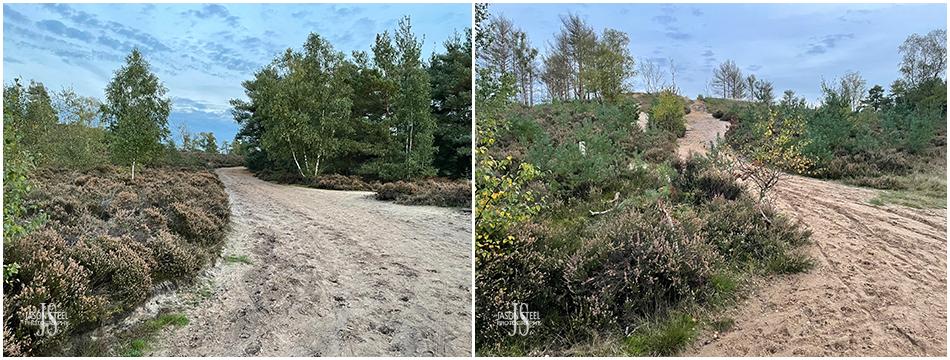
Great Fox Spider habitat at Hankley Common, Surrey, 4th October 2024
My Quest To Find One Of Britain's Rarest Spiders
I still remember seeing the news back on the 31st October in 2020. The story of a huge Wolf Spider being rediscovered on a heathland site in Surrey was making all the headlines.
The Independent: "Huge spider assumed extinct in Britain discovered on MoD site after quarter of a century"
The Story of the Great Fox Spider being rediscovered by Mike Waite at a Surrey heathland site certainly caught my attention. Mike Waite's photo showed a large and impressive spider, with very bold markings. This spider was reported to be far larger than all other Fox Spiders in the Alopecosa genus, and I knew if I ever got to see one then it would photograph well. At the time I assumed the undisclosed heathland site would have restricted access to members of the public and I put my hopes of photographing this spider in the "one day" box at the back of my mind.
In 2024 I heard that Mike Waite was streaming a live presentation of his rediscovery and studies of the Great Fox Spider for anyone to see. This was one presentation I really wanted to watch. When Mike gave his on-line talk I was fascinated to learn that the spider was found on both the Morden Bog site, in Dorset, and on the Hankley Common site, in Surrey. I wasn't familiar with Morden Bog but I already knew that Hankley Common was open to the general public 24 hours a day, with no restrictions for those wishing to explore the site on foot. Being a nocturnal species I knew that a search for the Great Fox Spider would need to be conducted in the evening, if I had any hopes of finding this rather special spider. This wasn't something that I was going to be able to attempt until I had some time off work though. When my week off work arrived in October my car was off the road with mechanical issues and I had to get that fixed before I could drive to Hankley. Thankfully the car's faults weren't as severe as I had feared and the garage was able to get me back on the road by the end of the week. Unfortunately I had already committed myself to visiting another location to photograph the False Wolf Spider, Zoropsis spinimana. Those plans fell through at the last minute I now had a free day to pick a species that I wanted to photograph. It didn't take me too long to remember the Great Fox Spider and I set about making preparations to search for this very rare spider the next day. Thankfully Mike's on-line presentation had been superb, and it gave some wonderful insights on where and how to look for the Great Fox Spider at Hankley Common. Without Mike's work I would never have found this species on my own. I also give credit to Mike for much of the information I've been able to add to my website on this species.
I set off towards Surrey early the next morning with the intention finding the Great Fox Spider and photographing plenty of Hankley Common's other invertebrate species too. Although I already knew that Alopecosa fabrilis was a largely nocturnal species I was quietly hoping that I would still be able to find one during the daytime, and would not have to stay there on my own after it got dark. The thought of parking my car, which happens to be my pride and joy, on an empty heathland site at night, and then wandering around on my own in the pitch black, was making me a little nervous. Whilst I'm not a usually nervous person, and I'm not afraid of the dark, I am worried about leaving my car unattended anywhere. And at the age of 53 my eye-sight certainly isn't as good as it once was in low light situations. Well, let's just hope I can find one in the daytime, I told myself. The weather forecast was predicting a dry, sunny day, with a maximum temperature of 14°C. Perfect conditions for an October day of spider hunting!
As I approached Hankley Common I drove down a very narrow, very bumpy road. There were large potholes all along this road, filled with muddy water from the previous night's rainfall. This was not the ideal environment for my pristine MINI Cooper S, with its lowered and uprated suspension. I continued to crawl along the road, driving at a snail's pace, and doing my best to avoid the worst of the potholes. A couple of pedestrians overtook me as they strolled down the lane, looking back at me with a smirk on their face as I tried to squeeze my car between two monstrous puddles. I then encountered a security guard who walked up to my car window. "Are you with us?" the man asked. "No mate. I'm just looking for Hankley Common." I replied. "Well, you've found it. This is Hankley Common. Can I ask what you're here for?" the security guard asked as he looked through my car window and noticed the photography equipment on my back seat. I explained that I was here to search for the Great Fox Spider, a very rare spider that's found specifically on Hankley Common. The security guard seemed genuinely interested as I told him a little more about the spider and its history. The security guard then explained that due to ongoing filming taking place at Hankley Common the car park was closed to the general public. I was welcome to explore the site with no restrictions but I would have to park my car on the muddy grass verge at the edge of the road. The idea of driving my freshly polished car up onto this mudbank and leaving it there unattended was starting to fill my heart with terror! It had taken me nearly two hours to drive here though, and I was unlikely to get another opportunity to visit Hankley Common again in 2024, so I chose to park up and find this spider. After all I could keep coming back to the car at regular intervals to check on its safety, and I could spend tomorrow morning cleaning and polishing my car again.
So I parked the car, changed into my old boots, and headed off towards the car park on foot. Along the way the habitat looked pretty good for my favourite arachnid species, the Purse-web Spider, Atypus affinis. The Purse-web Spider was still at the top of my wish-list as at this point and I still hadn't managed to find a wandering male to photograph. I stopped to check my phone and have a quick Google search for "Atypus affinis Hankley Common". Unfortunately there were no encouraging results on-line and it didn't look like the Purse-web Spider was known to be established at this site. Oh well, I would still keep my eyes peeled just in case. I started heading towards two areas that I had chosen to target for my search for the Great Fox Spider. Both were areas of Hankley Common that Mike Waite had previously found the spider on. Before I reached my destination I had noticed quite a few different Wolf Spiders running around on the sandy soil. Some were clearly Pardosa species, and I was surprised to observe that many of them were still carrying egg-sacs behind them, even though it was now October. I began to wonder if this was a second brood?
I also began to notice some slightly larger Wolf Spiders with a body-length of 10-12mm. I had spotted at least two different Wolf Spider species here, that definitely weren't Pardosa species. Could one of these be a young Alopecosa fabrilis spiderling that I came here to find? I snapped a few quick shots of them and sent them by text message to my friend and fellow spider enthusiast, Shreyas Kuchibholta, in the hope of a positive ID. Shreyas was helpful as ever and quickly came back with the identifications. One of them was indeed an Alopecosa species but sadly not the one I was after. These were male and female adult Easter Fox Spiders, Alopecosa barbipes. The other more colourful Wolf Spider I found was Arctosa perita, the Sand Bear Spider. I had previously photographed the Sand Bear Spider at the nearby Thursley Nature Reserve site earlier in the year. This specimen looked nothing like my previous encounters though and demonstrated the huge variation in colour for this species.
Once I was at one of the areas where the Great Fox Spider was known to be established I now considered how I was going to conduct my search. I had heard from Mike's presentation that juvenile Alopecosa fabrilis can sometimes be found in leggy heather. There was plenty of that on this site. I started my search by getting down on my hands and knees and carefully inspecting the bases of many heather clumps. I was starting to see some Wolf Spiders but not what I was looking for. I then switched tactics and decided to shake some of the overhanging heather to see what species dropped out. This proved highly successful at finding spiders. There were various little Crab Spiders, Sac Spiders and House Spiders dropping to the ground. Now usually I would have photographed some of these finds but to my horror I discovered that I had only brought one spare battery for my camera. At this point I realised that I would have to stop taking photos of anything other than my target species and save my remaining battery power in case I got lucky and found the Great Fox Spider. One interesting find, that fell from the shaken heather, was an adult female Episinus truncatus, a nationally scarce species, which was once again identified for me by Shreyas. I decided to sacrifice a little of my camera's battery life to capture some quick shots of this rarity before continuing my search. As you can see from my images of Hankley Common, pictured above, the sandy pathways, along which I was focussing my search, were full of tracks. It was cleared that this area was very well used by hikers, dog-walkers, horse-rides and even cyclists. It was difficult to believe that such a rare spider could survive in a habitat with so much human disturbance. Being a nocturnal species the Great Fox Spider could remain hidden away during the hours that humans typically use the site though, and only emerge once everyone had left.
Despite many hours of searching the heather I failed to find the Great Fox Spider. As a last resort I then started carefully lifting any stones and pieces of wood, in the hope of spotting a Great Fox Spider burrow beneath. This tactic also proved to be unsuccessful and I now came to the realisation that I was going to have to stay on this site until it got dark, if I was going to find the Great Fox Spider. Whilst the thought of staying on the heathland had initially seemed a little daunting I was now comfortably reassured by the presence of a large number of security guards at Hankley Common. Having chatted to a few of the guards I was informed that a new TV drama was being filmed next week at this site. Preparations were on the way for filming sets to be built at several locations on Hankley Common. The site was filled with off-road quads, various vans and trailers and several JCB diggers. There was even a large Russian military helicopter in the middle of the heathland, which one security guard told me was going to be blown up next week, as part of the TV drama they were filming there. The security guards had now set up two checkpoints along the road to where my car was parked. One at the very entrance, and one just passed my car. Although these guards were there to keep an eye on all the valuable filming equipment I preferred to think of them as my own private security firm who were there solely to watch over my car for me. How very considerate of them. Once I resided myself to the fact that I was going to be on site until well after it got dark I then started to wonder if I could last that long without food and without a toilet. Thankfully where there are security guards there are also porta-loos, so that was one of my problems solved. Now I just had to ration the half pack of miniature gingerbread men that my wife had given me for my journey.
Now that I was committed to a night time survey I started making preparations for searching in the dark. I had brought along two head-torches and a hand torch, just in case I failed to find any Great Fox Spiders during daylight hours. Now things took a turn for the worse and I realised that I wasn't as prepared for nocturnal surveys as I thought I was. One of my head-torches was completely dead. The other head-torch was only half charged, and the hand torch wasn't working at all. I had brought along spare batteries for the hand-torch but they weren't going to help on this occasion. The old batteries had leaked and the insides of the torch were badly corroded. OK, so let's evaluate my supplies, I thought. I have one half-charged, small head-torch to search a huge heathland site in complete darkness. If that failed then I would have to rely on the light on my iPhone to guide me back to my car. It now felt like my chances of finding the nocturnal Great Fox Spider had diminished significantly, and my hopes of finding this spider had crashed to the ground. But I'm not one to give up so I just had to focus my efforts on one small area of the site and pray for some help from above. I picked the spot where the habitat looked most suitable, and where I felt I had the very best chance of finding these illusive spiders in the short amount of time I would have before my head-torch ran out of power. The time was 5pm. The sky was still bright, and the sun didn't look like it would be setting anytime soon. A quick check on my phone showed that the sun was due to set at 18:30, so I had and hour and a half to kill. By this stage my boots were starting to hurt my feet though and I really didn't feel like traipsing around the heath for another 90 minutes. As much as I love exploring this kind of habitat I really didn't want to find any other species when I needed to conserve by camera's battery power. All I could do at this point was just sit and wait. My phone was now showing just 17% battery life remaining so that also had to be saved until I needed it later. It's not often that we have time in today's busy world to sit in silence, with no distractions, and nothing to occupy our minds but our own thoughts. It's during such moments when our senses start to come to life. I began to notice all the different bird calls in the background. I could hear the sound of the beating wings of a dragonfly, as it hovered just above my head.
18;30 finally arrived and the sun had now disappeared behind the horizon. The sky at this point was still fairly bright and it seemed to take ages before the light levels began to fall. When the light had dropped significantly I got my camera ready and put on my head-torch. I was keen to begin my search but had to restrain myself for a little while longer. I wouldn't have much time with the battery power left in my head-torch so I really had to make every minute count. I decided to wait until it was completely dark before commencing my search. Thankfully it took very little time from when the light first started to fade until it was so black that I couldn't see directly in front of me without the use of a torch. At this point I switched on my head-torch and began hunting for the Great Fox Spider. As soon as the light had disappeared the temperature dropped to a cool 9°C, and I wasn't sure if it was still warm enough to find these spiders. My search consisted of very slowly walking and scanning the sandy pathways, with the light from my head-torch alternating between the open pathways and the bottom of the over-hanging heather, that lined both sides of the sandy trails. Again this is where Mike Waite's online presentation proved invaluable. I had heard that the artificial light from a torch could be seen reflecting from the eyes of the Great Fox Spider, when caught at the right angle. This is exactly what I started seeing for myself. The eyes of small spiders glistened like tiny green emeralds as I started to find small, unidentified Wolf Spiders beneath the heather, at the edge of the path. I quickly knelt down besides one pair of eyes and rummaged through my bag for a small bug pot, hoping that the spider wouldn't disappear before I had the chance to capture it. Luckily the spider never moved. It was transfixed by the light from my head-torch and remained totally still. Once caught in the pot I was able to take a closer look. This spider, although small, was definitely something different. It had a body-length of around 6mm and had a pale grey colouration. I was fairly confident that this was a young spiderling of the Great Fox Spider. I kept hold of this specimen and resumed my search. I kept spotting these tiny, shining, emerald eyes from beneath the heather. On each occasion I knelt down to take a closer look. These were all the same species but varied in size from 6-8mm. Within about 15 minutes I had recorded 8 of these spiderlings. The pathway came to a junction and I then proceeded around the corner, and started heading up a steep and narrow sandy trail, that led up to slightly higher ground. I continued to see similar tiny eyes at the edge of the pathway but I now stopped bending down to inspect and identify them. I already had one juvenile specimen in a pot to photograph, and I needed to find an adult specimen before my torch-light gave up on me. As the temperature continued to drop moisture was starting to gather in the form of tiny droplets on the heathland vegetation. These water droplets began also reflecting the light from my torch, making it a little tricky to distinguish between the water droplets and the eye-shine of the spiders.
I had only walked about 10 metres up this ascending sandy trail before I spotted a much larger, and brighter pair of emeralds glistening in the middle of the pathway. I could instantly tell that this was a much bigger spider. My heart raced with excitement as I tentatively approached the spider with my bug-pot at the ready. This spider was huge! The legs were far too stocky for this to be any Eratigena species, and no other spider that size would be sitting on a heathland pathway in the middle of the night. This had to be an adult Great Fox Spider. As I knelt down next to the spider my excited hopes were confirmed. This was indeed an adult female Great Fox Spider, and what a beautiful specimen it was! I estimated its size to be nearly 15mm in body-length. This actually proved to be an under-estimation as a little later I was able to measure the spider at a whopping 17mm in body-length. The spider stayed totally still, just like the juveniles had previously done. I took several in-situ shots before carefully placing a large, clear pot over the top of the spider. Now the spider was isolated I reviewed the images I had just taken. This was without doubt one of the most stunning spiders that I have ever seen. The adult spider had now started moving around beneath the pot and I laid down on the ground to capture some further shots. As I lifted off the pot I prepared myself for the spider to make a frantic dash for freedom. Being a species of Hunting Spider I anticipated the spider would move in great bursts of speed. This didn't happen. Once free and unrestrained the Great Fox Spider slowly began walking down the pathway. It's speed showed no sense of urgency and was akin to that of a Sunday stroll, without a care in the world. Every time I positioned myself directly in front of the spider it would stop walking and freeze, allowing me to capture the eye-level shots that I was after. The spider had been such a fantastic subject to photograph and I apologised to the spider when I had to catch it again in my pot. The spider was briefly robbed of its freedom as I changed the settings on my camera and set up my white plastic sheet, so the spider could be photographed against a white background. Even when placed on the artificial surface of the white background the spider was still well behaved and fortunately for both myself and the spider I was able to quickly capture all the various angles I needed before releasing the spider, back in the exact same spot where it was originally found. I then turned my attention to photographing the juvenile specimen. Surely the juvenile wouldn't be as cooperative? But it was! It took just a couple of minutes to capture the photos of the juvenile Great Fox Spider against a white background. It was then release back under the same heather bush where it was found. Unfortunately I completely forgot to photograph it on a natural background though. As soon as I had taken the first photo of the juvenile, and reviewed the image on my camera, I was able to confirm its identity as a young Alopecosa fabrilis. So that was that. My mission accomplished! My camera battery light was now flashing, indicating that the camera battery was about to die, so I packed up my equipment and headed back towards my car. The light from my head-torch was beginning to fade and I still had a 15 minute walk back to the car. As I walked back to my car I was filled was an enormous sense of gratitude for the wonderful experience I'd just had. The stars were shining brightly in the clear night sky. The only sound to be heard was the hooting of an owl, from the nearby trees. Thankfully the light from my head-torch held on just long enough for me to have my car in view before the battery finally gave up and I was suddenly plummeted into complete darkness. Sometimes, against all odds, our prayers are answered and things do occasionally work out perfectly for us!
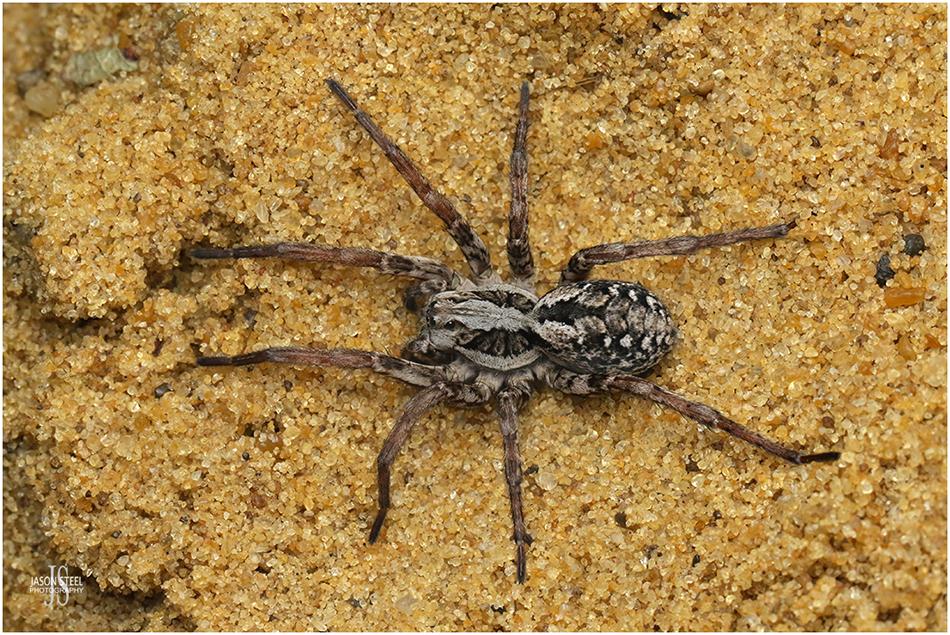
17mm adult female Great Fox Spider, photographed at Hankley Common, Surrey, 4th October 2024
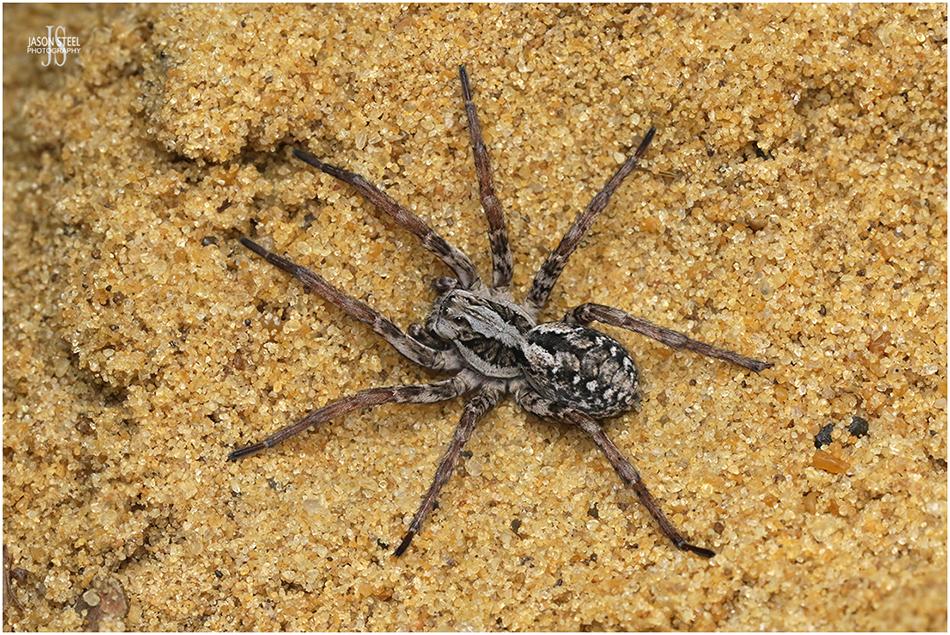
17mm adult female Great Fox Spider, photographed at Hankley Common, Surrey, 4th October 2024
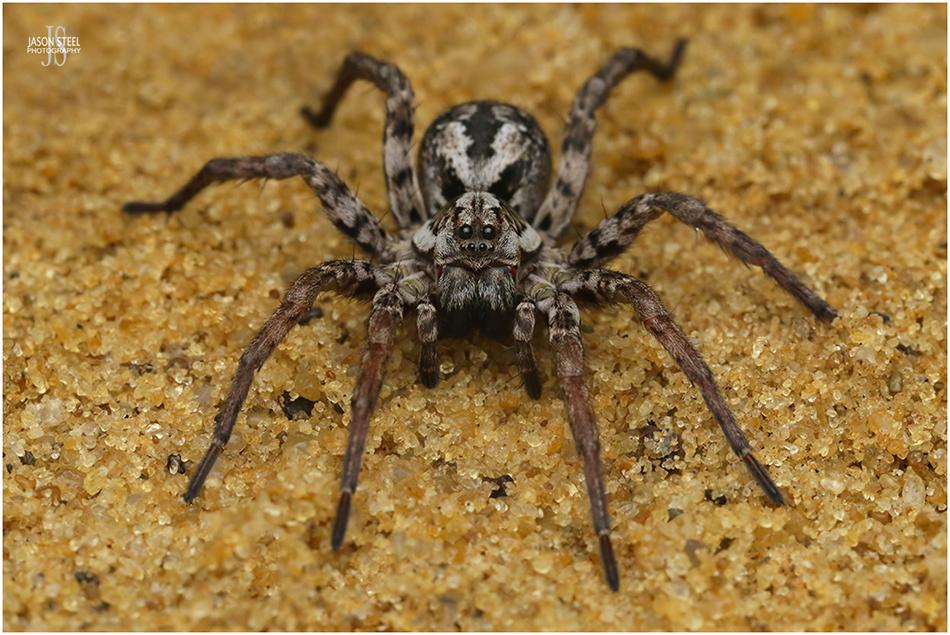
17mm adult female Great Fox Spider, photographed at Hankley Common, Surrey, 4th October 2024
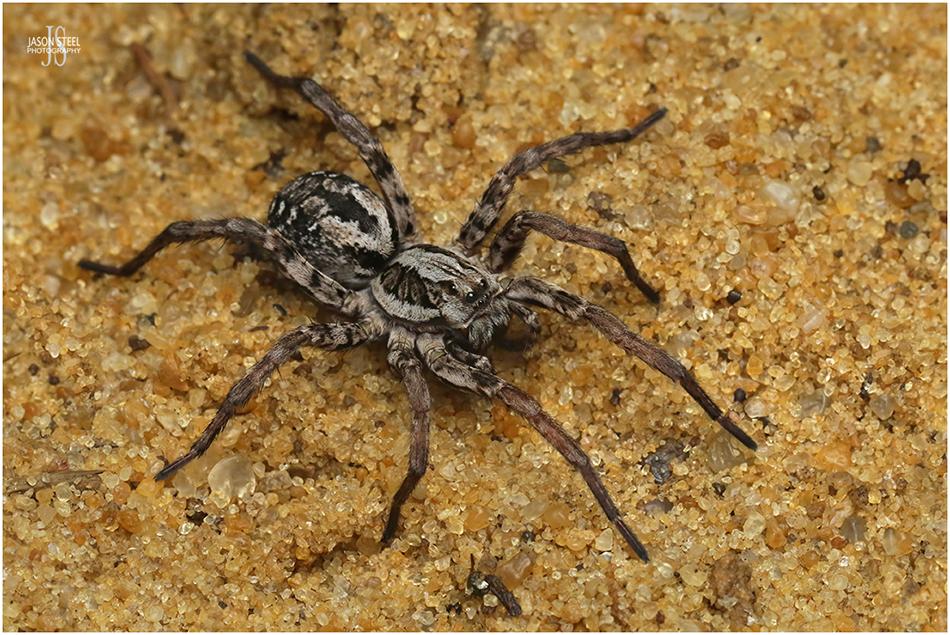
17mm adult female Great Fox Spider, photographed at Hankley Common, Surrey, 4th October 2024
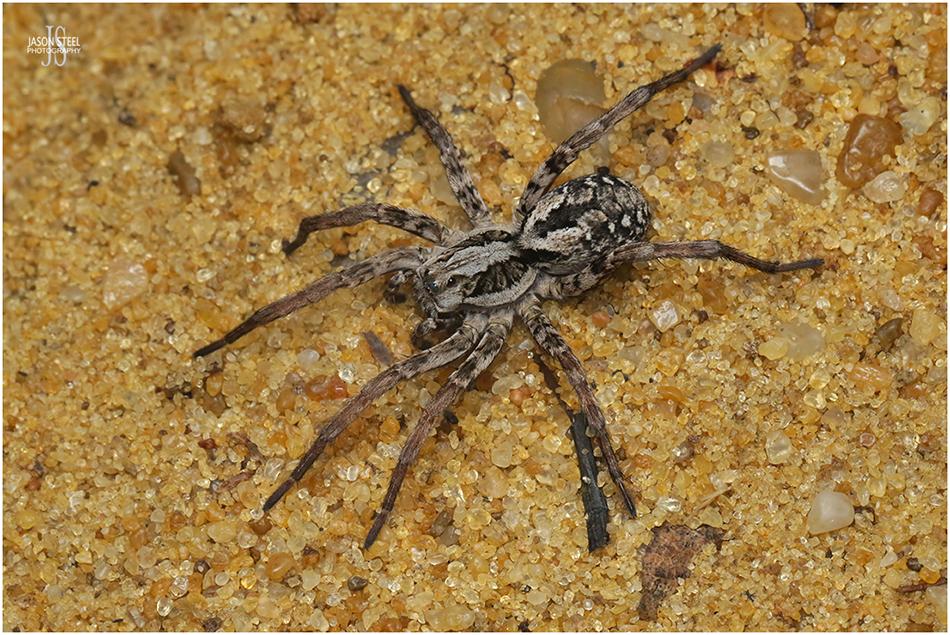
17mm adult female Great Fox Spider, photographed at Hankley Common, Surrey, 4th October 2024
My return to Hankley Common 2025
After my successful trip to Hankley Common in October 2024 I decided to return once again in 2025, in the hope of photographing an adult male specimen for this website. With adult males known to die off at the end of autumn I decided my best chance of finding an adult male specimen would be to head back to Hankley Common in August.
So on August 17th I drove back to the Surrey site. The weather forecast was dry but overcast, with a daytime temperature of around 22 degrees. This time I was fully prepared with both my head-torches charged, so I just had to wait for the evening to arrive, when the Great Fox Spider would emerge under the cover of darkness. At this time of year the sun sets at around 20:30 hrs. It then takes around another half an hour before it starts actually getting dark. I waited until 21:00 hrs before I decided to switch on my head-torch and begin my search. I focussed my search on the same sandy pathways where I had previously had success finding the Great Fox Spider in 2024. I walked along very slowly, scanning the edge of the pathways with my torch, where the heather and gorse grew. It didn't take too long before the torchlight caught the first pair of reflective green eyes, that gave away the position of a motionless Wolf Spider, waiting to ambush its prey on an open patch of sandy soil. I carefully moved in closer and the 8mm Wolf Spider continued to remain still, relying on its excellent camouflage to keep itself hidden from me. The spider was easily caught in a pot and then examined for identification purposes. Yep, this little Wolf Spider was indeed a juvenile Great Fox Spider. Once the identity had been established the spider was immediately returned to the exact same spot where it had been found. I had already photographed juvenile specimens on my last visit to Hankley Common so I saw no purpose in subjecting this little one to a photo session unnecessarily.
I continued my search and within a few minutes I had spotted another pair of emerald eyes staring back at me from the edge of the pathway. These were bigger eyes and must therefore belong to a bigger spider, I thought to myself. Once again as I slowly bent down and placed my pot over the top of the spider it made no attempt to run away. As soon as the spider had been potted I could clearly see this was an 11mm male specimen. The legs were far longer than that of a female. It also lacked the female's dark, thin, tramline markings, that are present on the front of the female's cephalothorax. But was this male specimen mature, or was it just a larger juvenile? A close look at the pedipalps revealed a dark palpal bulb. Yes, this was exactly what I had come to find, an adult male Great Fox Spider. When I previously found the adult female specimen in 2024 I was immediately impressed by the sheer size of the spider. It really was a magnificent specimen. But this male left me feeling a little underwhelmed. It was still a beautiful Wolf Spider, and a very reasonable size by UK standards. However for me it lacked the same wow factor of the adult female from my last visit. Although male Great Fox Spiders can grow to a body-length of 16mm the average size of an adult male is far smaller, typically just 10-12mm. I took a few quick shots of this 11mm male specimen and then released it once again. I was determined to find a larger and more photogenic specimen on this trip.
Further finds took a little longer and over the next two hours of searching I managed to find another five juvenile specimens, ranging in size from 5-8mm. And then finally, as I was just starting to lose hope, I found another adult male. This one was marginally bigger than my first male and had a body-length of 12mm. I set up my equipment in the middle of the sandy pathway and started taking some photos. The spider was largely very well behaved and allowed me to get all the shots I was after in a short space of time. It did run up my hand a couple of times though, but this afforded me the opportunity to get some photos of the spider on my fingers, which gave the images a good sense of scale. As with the large female Great Fox Spider that I photographed in 2024 I soon realised how effective their camouflage was. On two occasions I briefly took my eyes off the subject, for just a few seconds, but when I looked back again the spider was gone. It had vanished! I quickly turned on all the lights I had brought with me and frantically looked around me for signs of an escapee spider, making a mad dash for freedom. On both occasions it was only once I'd added a little more light to the scene that I was then able to realise that the spider hadn't actually moved at all. It was still in the exact same spot but was just brilliantly blending in to the sandy soil or rock that I had positioned it on. The spider was then released back at the location where it had originally been found. Once free it still didn't try to run away. It took about five minutes of me sitting very still before the spider slowly walked back into the vegetation and disappeared. It was now nearly midnight and I decided to head back to my car and call it a night. The ground now had a damp, misty covering of moisture, and the temperature had dropped to just 12 degrees, which felt rather chilly for a mid-August evening. What a privilege it had been to once again find, photograph and interact with one of Britain's rarest and most impressive spiders.
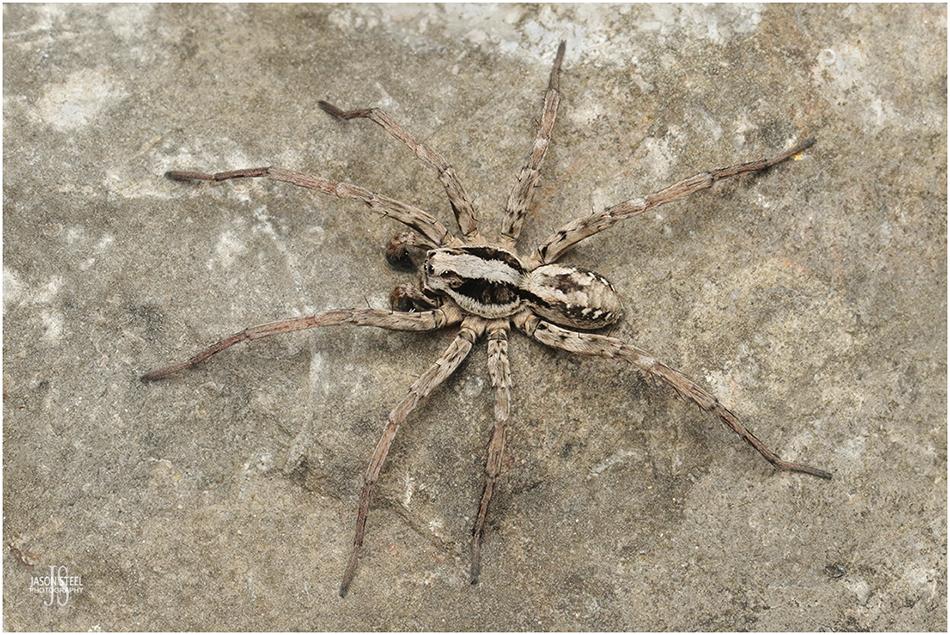
11mm adult male Great Fox Spider, photographed at Hankley Common, Surrey, 17th August 2025
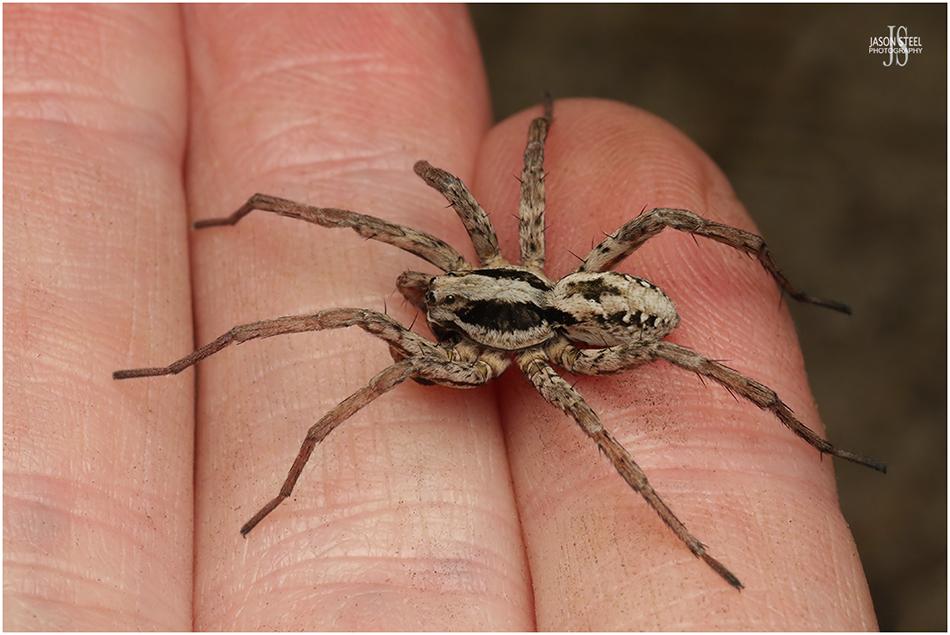
12mm adult male Great Fox Spider, photographed at Hankley Common, Surrey, 17th August 2025
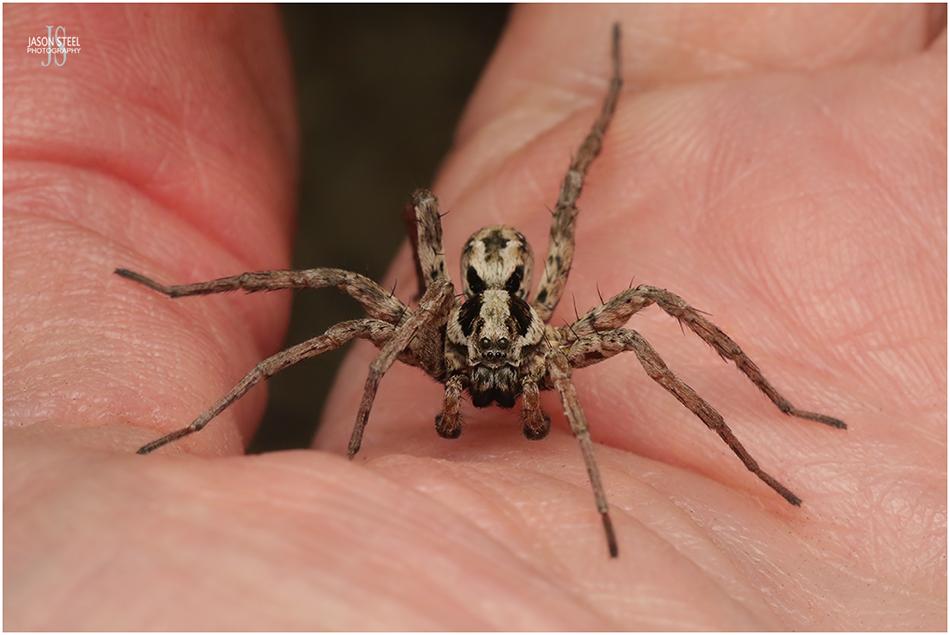
12mm adult male Great Fox Spider, photographed at Hankley Common, Surrey, 17th August 2025
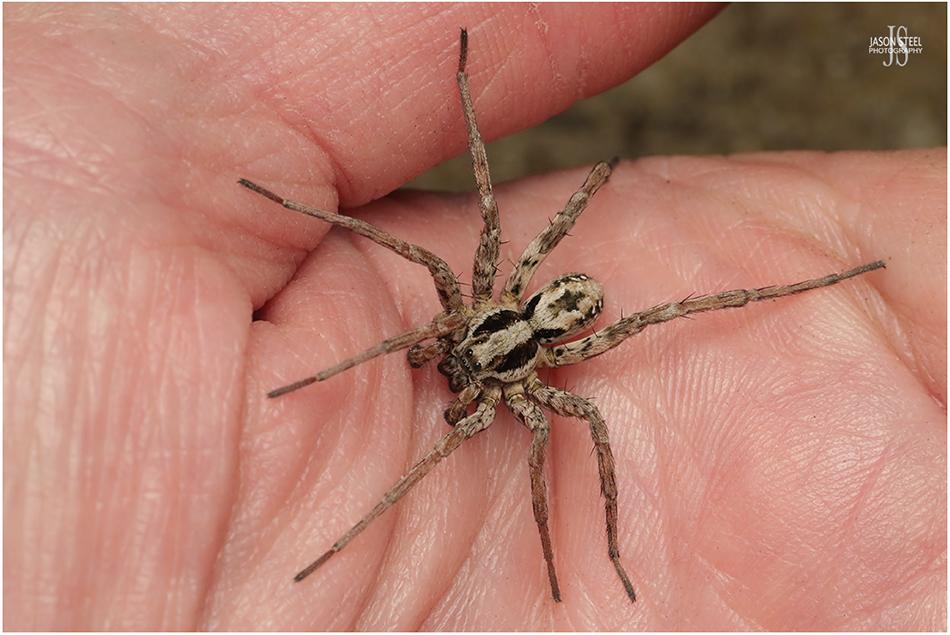
12mm adult male Great Fox Spider, photographed at Hankley Common, Surrey, 17th August 2025
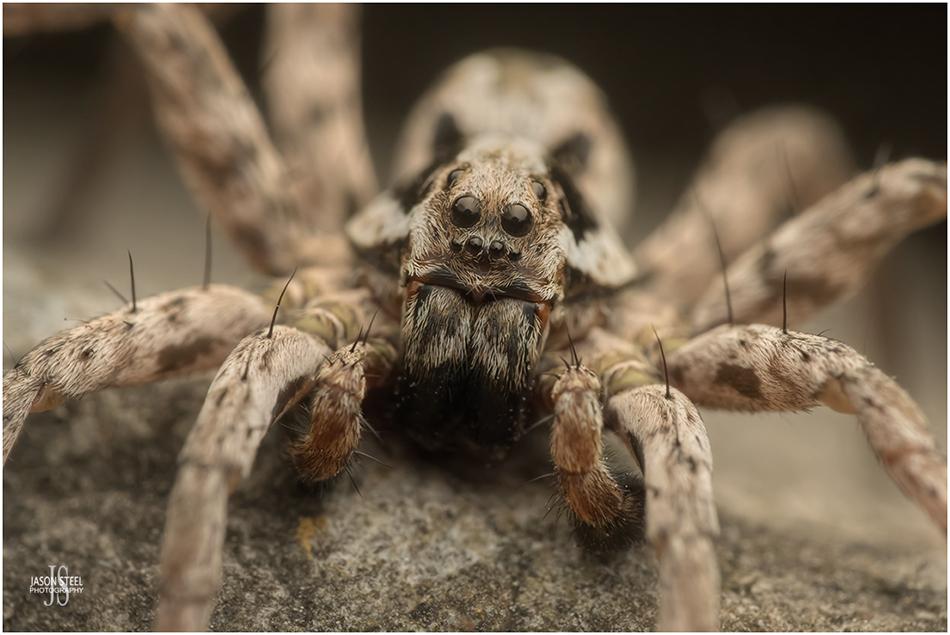
12mm adult male Great Fox Spider, photographed at Hankley Common, Surrey, 17th August 2025
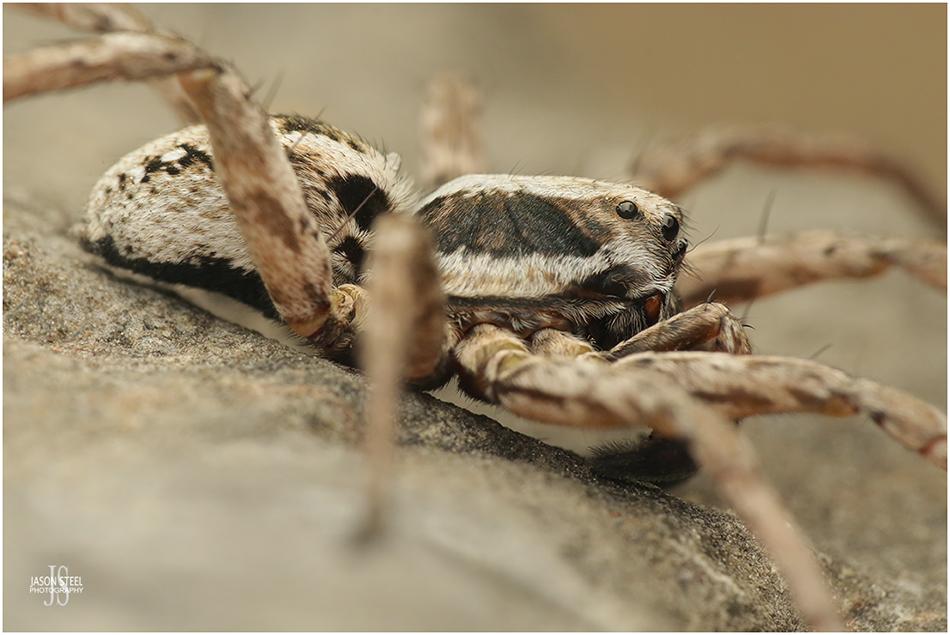
12mm adult male Great Fox Spider, photographed at Hankley Common, Surrey, 17th August 2025
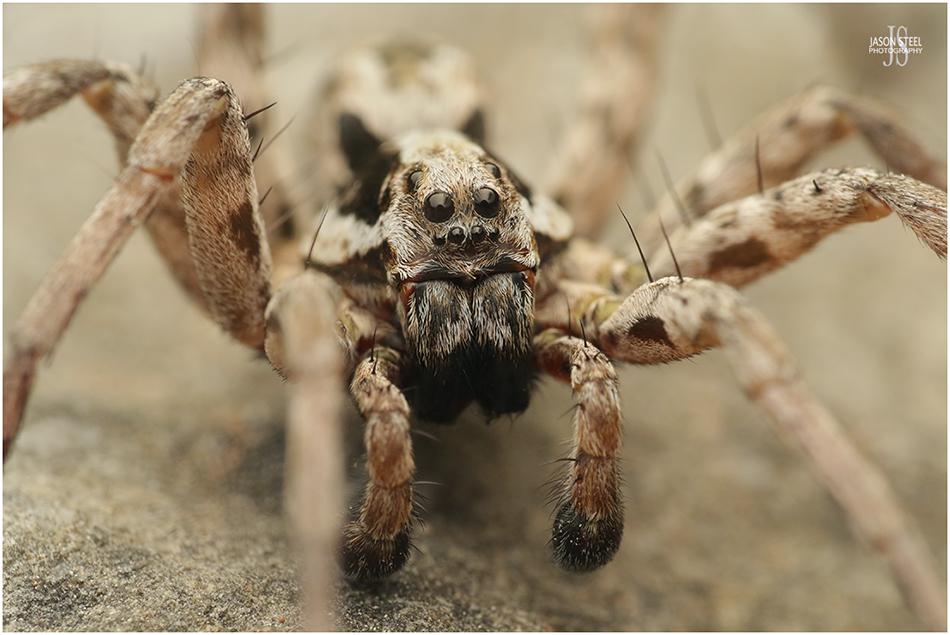
12mm adult male Great Fox Spider, photographed at Hankley Common, Surrey, 17th August 2025
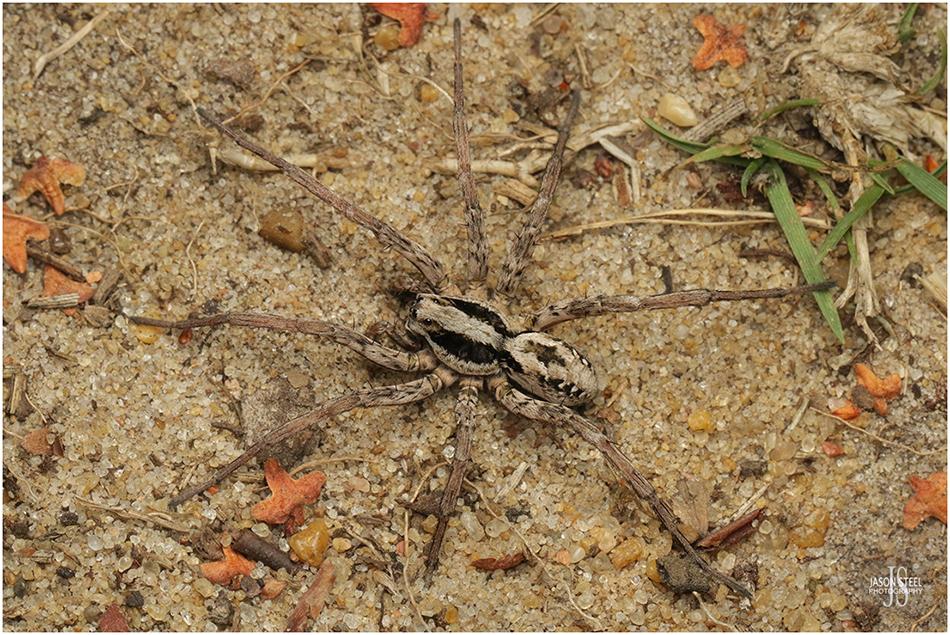
12mm adult male Great Fox Spider, photographed at Hankley Common, Surrey, 17th August 2025
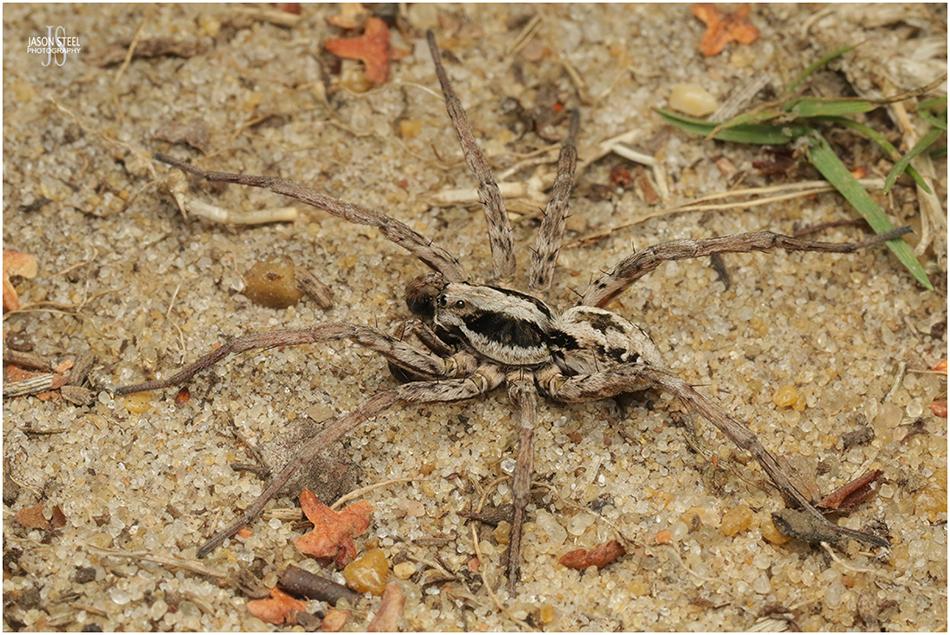
12mm adult male Great Fox Spider, photographed at Hankley Common, Surrey, 17th August 2025

12mm adult male Great Fox Spider, photographed at Hankley Common, Surrey, 17th August 2025
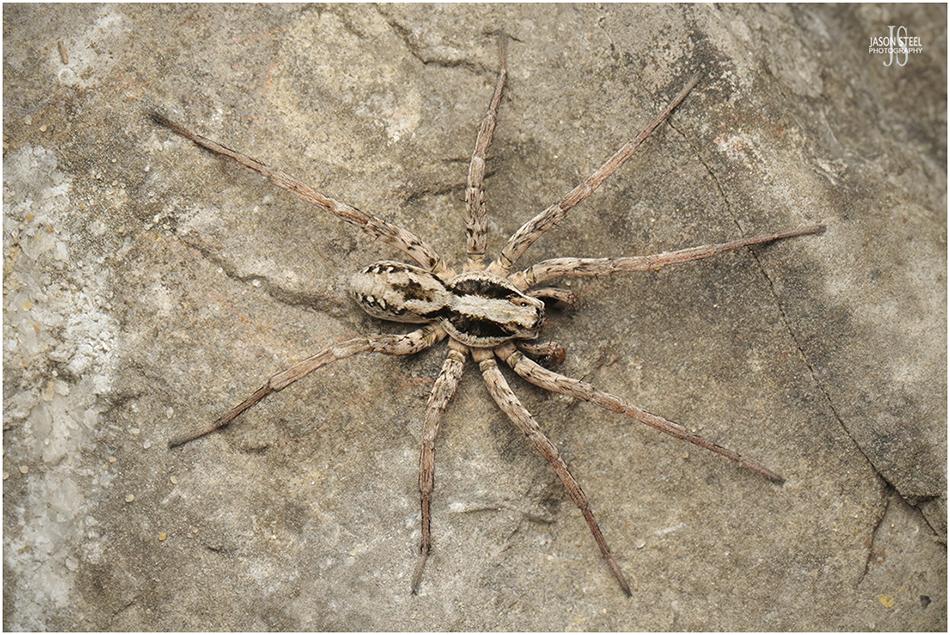
12mm adult male Great Fox Spider, photographed at Hankley Common, Surrey, 17th August 2025
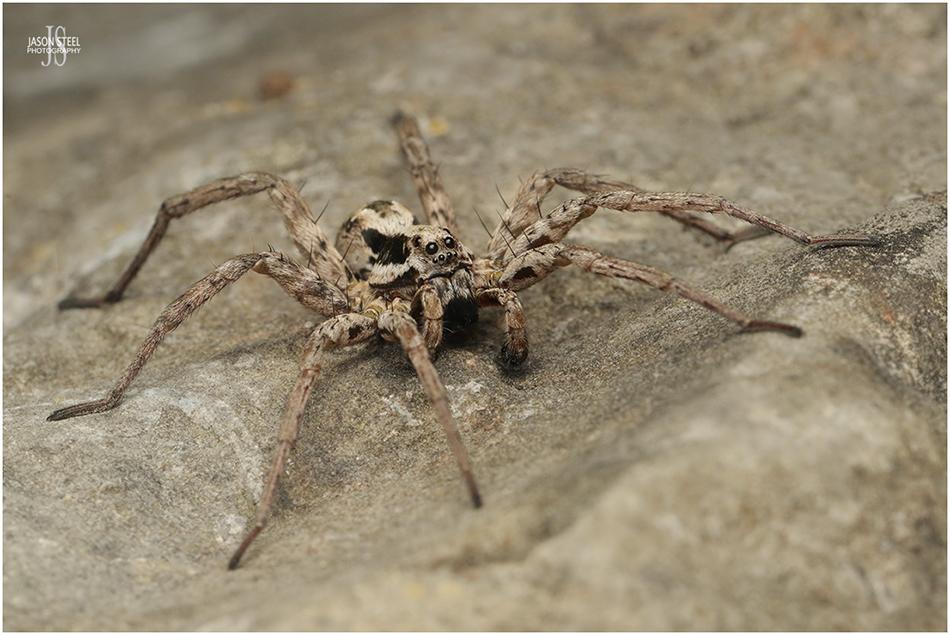
12mm adult male Great Fox Spider, photographed at Hankley Common, Surrey, 17th August 2025
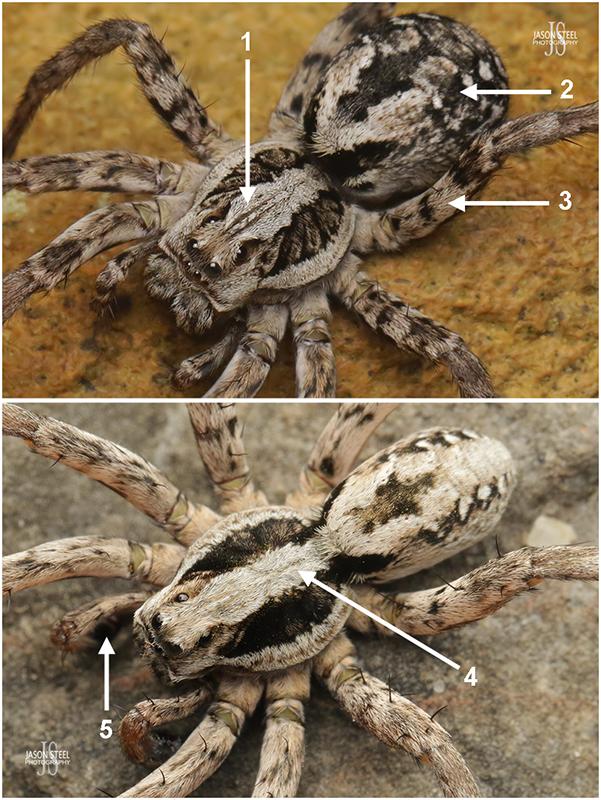
Comparison between the adult female and adult male Great Fox Spider.
Key features to help distinguish between the adult female and the adult male Great Fox Spider:
1) The dark, narrow, tramline markings found only on the carapace of the female.
2) The larger, more rotund abdomen of the adult female, with bolder markings.
3) The proportionally shorter legs of the adult female.
4) The overall paler shade of the adult male.
5) The dark palpal bulb of the adult male.
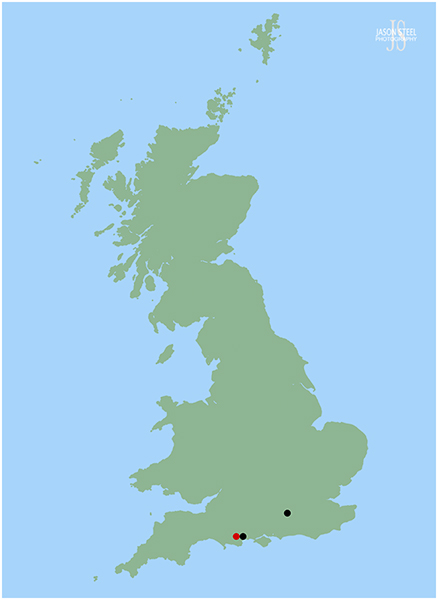
Known distribution of the Great Fox Spider in Britain. August 2025.
The Great Fox Spider is one of the rarest spiders in Britain. It's confined to very small areas of just two sites, Morden Heath, in Dorset, and Hankley Common, in Surrey.
Red Dot - Pre-1990 records from one small area of Morden Heath, in Dorset.
Black Dots - Post-2020 records at a second small area of Morden Heath, Dorset, and a small area of Hankley Common, in Surrey.